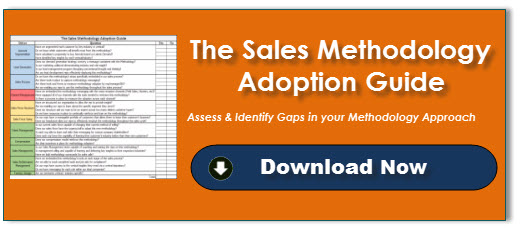It’s been two years since The Challenger Sale was published. The book’s premise is simple: the most successful reps are not relationship builders, but “Challengers”. Challengers have a deep understanding of their client’s business and industry. They are comfortable questioning conventional thought and provoking new ideas. Since this publishing, many B2B sales organizations have embraced this methodology. The thesis of The Challenger Sale is sound. However, it is not a magic pill for every struggling sales organization.
The allure of Challenger is easy. Sales VPs think my guys have become comfortable with “How ya doin?” and lunch. They want their customer interactions to deliver more value. But changing this behavior requires more than just an Oprah Book club mass-reading. An isolated week of training won’t work either. A Sales Methodology is only effective if it is reinforced. It must be ingrained in the company culture, from executives to the field.
The challenger sale requires a big investment in money, resources, and time. Sales Leaders should assess if their organization is ready to adopt this complex methodology. Download our Challenger Readiness Guide and learn if your organization is ready.
Here are five big questions to ask:
Is my sales team structured appropriately to handle The Challenger Sale?
Many sales organizations have a Hunter-Farmer/Geographic structure. Hunters assume a generalist role in a territory. They are calling on a huge swath of customers with different industries and maturities. Yet Challengers are supposed to “know the industry better than the customer themselves”. Some reps are calling on so many customers they can’t remember names. Good luck with industry thought leadership. To deliver commercial insight Challenger Reps should only cover a small number of industries.
Can my current talent become challengers?
Let’s face it. Most sales reps don’t have “Challenger” DNA. They are comfortable farming accounts without “rocking the boat”. A “Challenger” sale requires a shift in mentality that many will find unsettling. Even if they are comfortable, think of the capabilities required. The challenger sale requires reps to build advocacy by messaging to each unique role. This means tailoring their message to each stakeholder (eg CEO, CIO, CFO, COO, etc). Now cross reference that with industry expertise. The level of knowledge required is immense. Do your reps have the will and skill to learn it?
Is my Sales Management team capable of coaching this?
The Challenger Sale stresses the importance of coaching. Many managers we see are “A” Reps, but struggle to coach. Your managers will have to know the Challenger Sale better than reps themselves. They will need access to industry specific insight to coach their reps. They’ll need training and reinforcement on coaching. Assessment sheets should be populated for every joint sales call. Last, an auditor should follow up to ensure these sessions aren’t just “box checking”.
Is marketing aligned with this new methodology?
All the insight you’re asking sales to deliver needs to come from a centralized source. This would be marketing. Presentations, sell sheets, and demand generation all need to be updated with Challenger messaging. Marketing also needs to research and produce the industry-specific insights that sales will teach. They need to break these specific insights down by role to create advocacy. If you don’t coordinate with marketing, you’ll need to produce this content yourself. Don’t expect reps to generate groundbreaking insight in addition to all their other responsibilities.
Can you iterate it quickly?
The Challenger Sale is not a “one and done” strategy. You need to take an agile approach. Insights need to be continually updated as industries and products evolve. Initial teachings and prototypes may fail out in the field. Throw these out. Find out what is working and emphasize it. Build call and sales sheets, then seek feedback. You’ll need to shift to ensure Challenger fits your organization. Not everything will be perfectly aligned at launch.
The Challenger Sales is a solid framework, but it’s not a silver bullet. Adopting a new sales methodology requires a significant investment across sales and marketing. Download our Challenger Readiness Guide and become familiar with all questions you’ll need answered. If you decide to proceed, understand three things:
- You’ll need to devote significant time, money, and resources.
- Your team will struggle and resist at first. They’ll only buy-in when they see results.
- Have a process to measure progress, share “Win” stories, and coach to ensure traction.
Readers, have you adopted the Challenger Sale? Did you get the results you expected?




